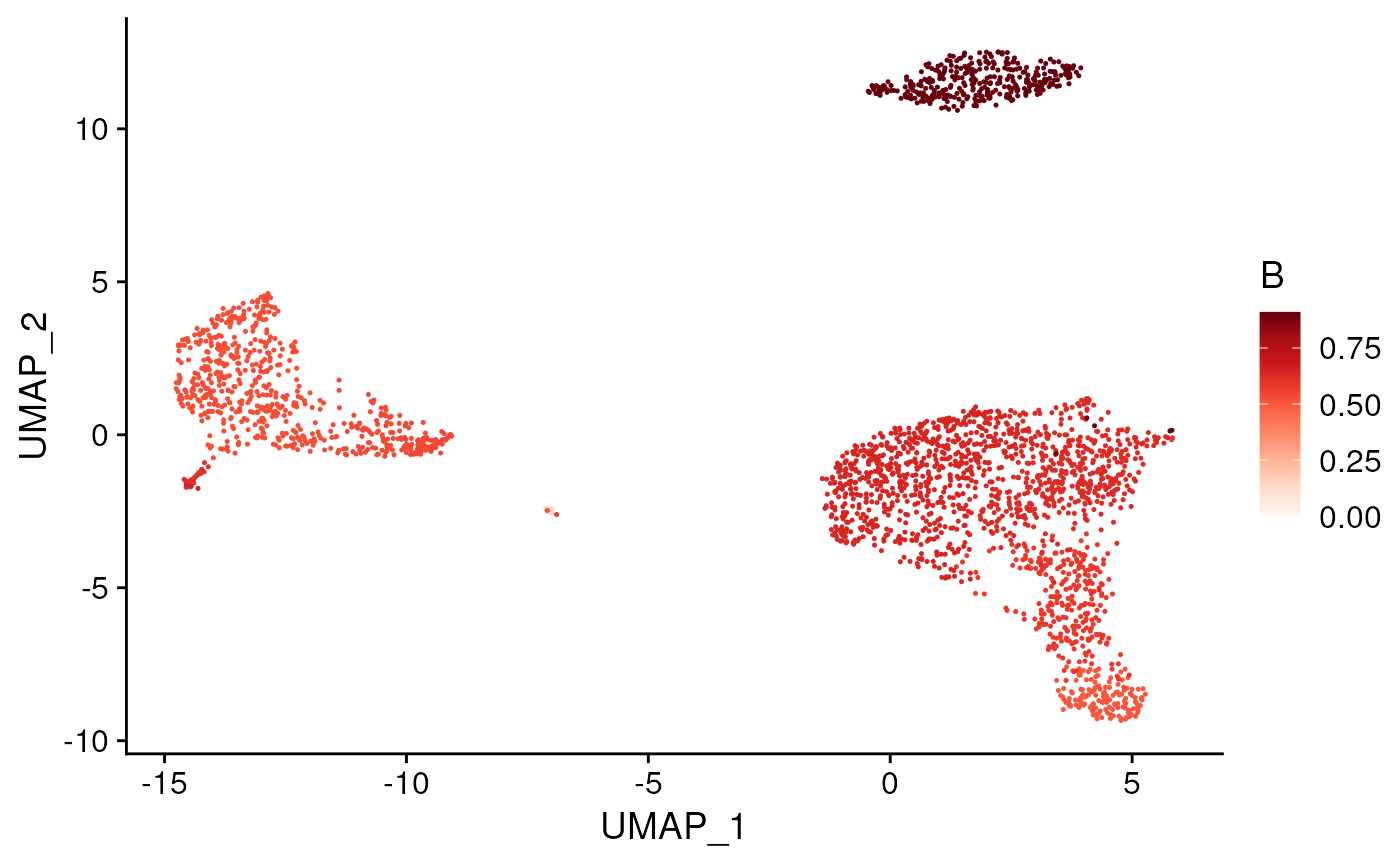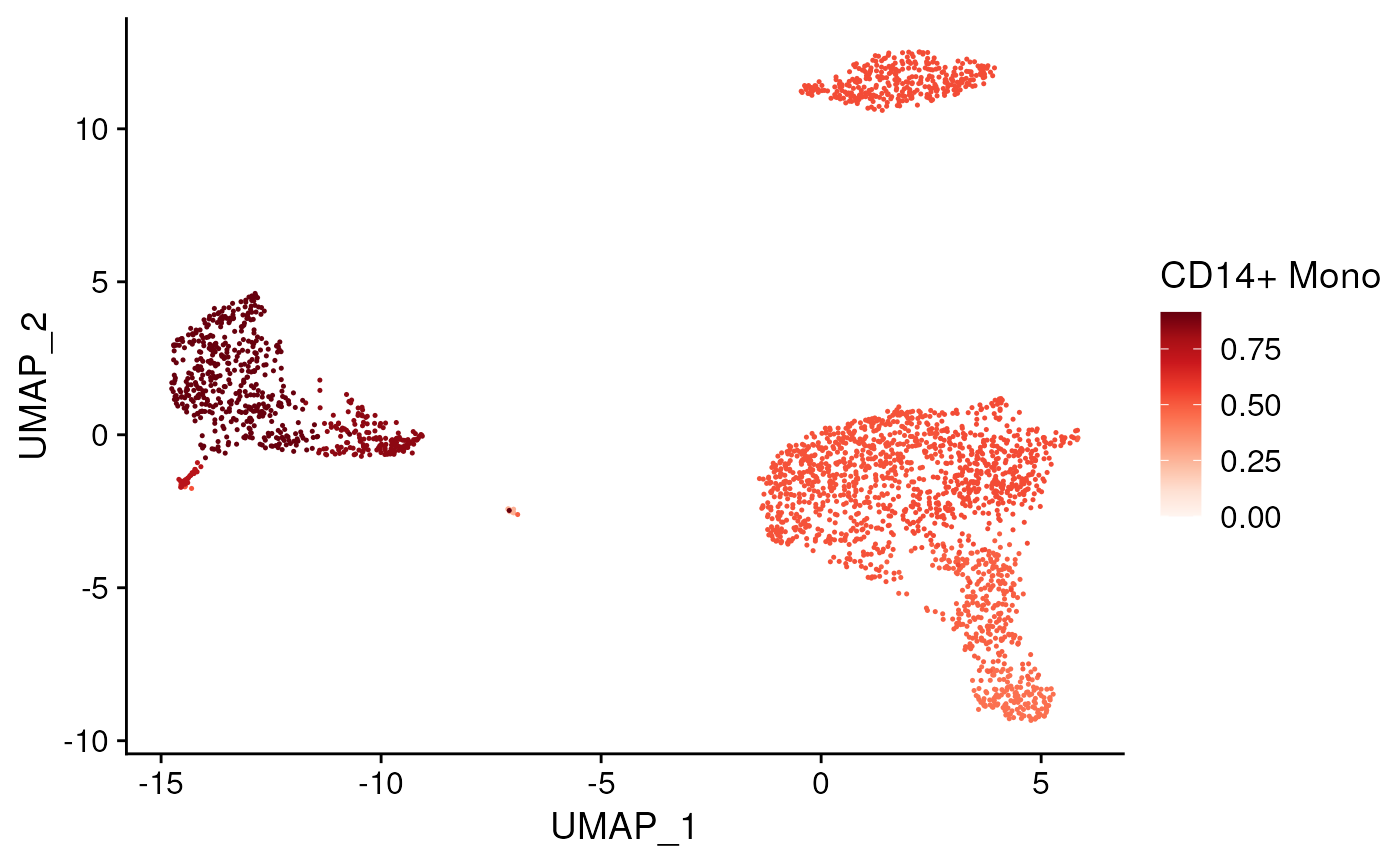Plot similarity measures on a tSNE or umap
Usage
plot_cor(
cor_mat,
metadata,
data_to_plot = colnames(cor_mat),
cluster_col = NULL,
x = "UMAP_1",
y = "UMAP_2",
scale_legends = FALSE,
...
)Arguments
- cor_mat
input similarity matrix
- metadata
input metadata with per cell tsne or umap coordinates and cluster ids
- data_to_plot
colname of data to plot, defaults to all
- cluster_col
colname of clustering data in metadata, defaults to rownames of the metadata if not supplied.
- x
metadata column name with 1st axis dimension. defaults to "UMAP_1".
- y
metadata column name with 2nd axis dimension. defaults to "UMAP_2".
- scale_legends
if TRUE scale all legends to maximum values in entire correlation matrix. if FALSE scale legends to maximum for each plot. A two-element numeric vector can also be passed to supply custom values i.e. c(0, 1)
- ...
passed to plot_dims
Examples
res <- clustify(
input = pbmc_matrix_small,
metadata = pbmc_meta,
ref_mat = cbmc_ref,
query_genes = pbmc_vargenes,
cluster_col = "classified"
)
#> using # of genes: 599
#> similarity computation completed, matrix of 9 x 13, preparing output
plot_cor(
cor_mat = res,
metadata = pbmc_meta,
data_to_plot = colnames(res)[1:2],
cluster_col = "classified",
x = "UMAP_1",
y = "UMAP_2"
)
#> [[1]]
 #>
#> [[2]]
#>
#> [[2]]
 #>
#>